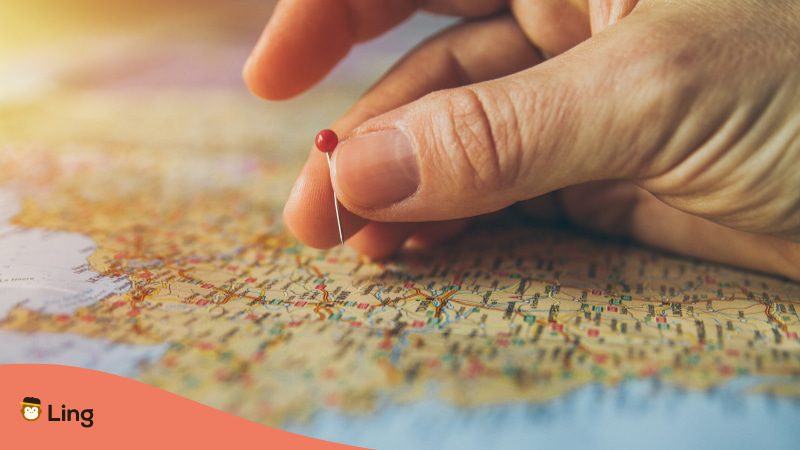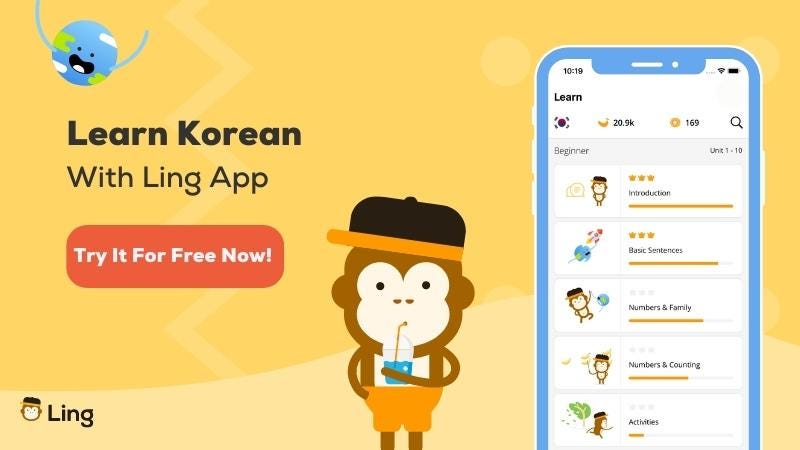Imagine yourself walking alone on Nami Island, then suddenly, someone said “제 이름은 …. 입니다 Je ireumeun Imnida.”. Then, you might want to learn how to introduce yourself in Korean. Wouldn’t it be to find a new friend in the beautiful country of Korea? Yes, this might sound as cheesy as what’s in Korean dramas, but it is not impossible to meet someone in Korea while having a good time.
Koreans are known to be polite and respectful. It is easily seen in the way they speak to other people, even strangers. Introducing yourself is one of the basic social etiquette during first meetings, and Koreans do this in the most polite way possible. So, let’s discover how to introduce yourself in Korean. Surely, after this language lesson, you will be able to make some new friends –친구 chingu.
Why Must You Learn To Introduce Yourself?
A self-introduction is not always too easy to do for some people. Some people feel anxious and shy, but some people are outgoing and want to meet many people. People can’t easily be confident in introducing their names, while some can get along easily and love to widen their circles. So, why must you learn to introduce yourself?
For starters, it breaks the ice between strangers. It saves you from awkward first meeting moments when you don’t have anything to talk about because you do not know each other. It can make other people feel confident to express themselves and share what they want to share.
Introducing yourself in business or the workplace is a requirement, especially if you’re a new employee or have just met your business partner. It is a sign of respect to the seniors and to the person you have a business with.
Lastly, it can show that you can confidently meet other people. Giving the impression that you’re okay with new friends, ideas, perspectives, and culture is one of the characteristics people love. You know that we will encounter people with different perspectives, ideas, beliefs, and traditions in our lives. If you want to gain more friends and connections, you should learn how to introduce yourself effectively.

How To Introduce Yourself In Korean?
Now that we have learned about the importance of introducing yourself, let’s learn how to introduce yourself in Korean.
The Korean language is not just a language spoken in Korea. It is also a reflection of their culture and traditions. Their politeness and respect for others can really be seen in the way they talk to others. If this is your first time learning about Korea, you should know that Koreans have different levels of politeness. These levels are determined by the age (age in Korean) and the social hierarchy of the person you are talking to.
Koreans have a formal form of spoken language, talking with elders, people in a much higher social hierarchy, and strangers.
The informal form is used when talking to people that are the same age or younger than you. It can also be your close friends or family.
The last one is the standard form. You can use this in most situations. It’s not too formal and not too informal as well.
The politeness level is one of the first things you remember when you are learning Korean. Therefore, it would help if you first learned how to be respectful and polite, which could be the best first step to introducing yourself in Korean.
Let’s start learning the words and phrases that you can use when introducing yourself in Korean.
1. Start With A Greeting
안녕하세요! (Annyeonghaseyo!)
Do you remember how Sung Deok Sun in “Reply 1988” introduces herself as a picket girl in the Olympics? Although the setting of this series is 1988, Koreans still introduce themselves that way.
“Annyeonghaseyo” or “Annyeong” is probably one of the most common Korean words that you’ll hear in Kdramas. So, why not start your self-introduction with a greeting? Just like in other cultures, we usually say ‘hello’ first before we talk to somebody. Greetings in Korean are usually done before you introduce your name in Korean. They are one of the most common icebreakers, and it also implies courtesy. This is the reason why this is the first step to introduce yourself in Korean.
In the past blog, you have learned Korean greetings. You should remember that it is not done casually like in other cultures. Koreans have their own way of doing it. They bow their heads according to the age of the person they are greeting. For handshakes, they do it with the right hand or both hands. To address them, they use their title or family name.
Here are other greetings that you can use:

2. Say Your Name
이름이 뭐에요? Ireumi mwoeyo? – What’s your name?
제 이름은 민준입니다. (Je ireumeun Minjunimnida.) – My name is Minjun.
Format: 제 이름은 …. 입니다 (Je ireumeun __ Imnida) – My name is __.
In the Korean drama “The King: Eternal Monarch,” Lee Gon (the king) tells Jeong Tae-Eul his name regardless of the rule that nobody should ever know the king’s true name. This scene truly proves that there’s no rule in love.
But, of course, you’re not a king in Korea, right? So, you still have to introduce your name in Korean. This is the most important step in introducing yourself to Korean. Some people want to use their Korean names in Hangul when they go to Korea. But, for those who are just starting yet, you can use the original pronunciation of your name.
Here are some Korean names:
For Girls
| Korean (Hangul) | Pronunciation | Sound |
| 채원 | Chaewon | |
| 다은 | Daeun | |
| 윤아 | Yoonah | |
| 은지 | Eunji | |
| 민지 | Minji | |
| 민정 | Minjung | |
| 혜진 | Hyejin | |
| 서윤 | Seoyun | |
| 영희 | Younghee | |
| 영미 | Youngmi |
For Boys
| Korean (Hangul) | Pronunciation | Sound |
| 윤우 | Yoonwoo | |
| 병철 | Byungchul | |
| 지후 | Jihoo | |
| 동해 | Donghae | |
| 동현 | Donghyun | |
| 준영 | Junyoung | |
| 소준 | Seojoon | |
| 태현 | Taehyun | |
| 영재 | Youngjae | |
| 주원 | Juwon |
3. Mention Your Age
몇 살이세요? (Myeot sariseyo?) – How old are you?
저는 스물네 살입니다 (Jeoneun seumulle sarimnida) – I’m 24 years old
Format: 저는 __살입니다 (jeoneun __sarimnida) – I am__years old.
One of the most iconic Kdrama is “Goblin.” It is about a 900-year-old Goblin who is cursed to live forever until he finds his bride. Can you imagine that? The Goblin is 90 years old. Of course, it cannot happen in real life, but if you live that long, you’ll meet many people.
Koreans have different ways of counting their age before. It is not the same as what most of the culture does. They have this thing called the Korean age, which is their own way of calculating their age. Korean age is always a year or two years older than their international age because they count their age while they are in the womb; that’s why when they are born, they are already one year old. Also. Every Korean age one year during New Year’s Day.
But if you’re not Korean, you don’t have to convert your age, especially if you’re just there for vacation. Use the format above to introduce yourself age in Korean. Remember that age is important in Koreans because this will be their basis for how to address someone. If you want to learn Korean numbers, here’s a list for you. You can visit the Ling app if you want to know more.
Here is a list of ages in Korean:

4. State Your Occupation
무슨 일 하세요? (Museun il haseyo) – What’s your occupation?
교사입니다. (Gyosaimnida.) – I’m a teacher.
Format: 저는__입니다 (jeoneun __imnida) – I am a __.
The next step to introduce yourself in Korean is to state your occupation. Then, share what you do for a living. Having a stable job nowadays is something that you should be proud of in your life. You are lucky if you find a job where you can do what you are passionate about.
The word for occupation in Korean is (직업 jigeop). Suppose you want to draw some inspiration on what occupation, profession, or job that you want in Korea. In that case, you might want to check Kdramas like Law School for those who want to be lawyers, Hospital Playlist, and Dr. Romantic for those who want to be in the medical field, and Itaewon Class and Start-Up if you want to start a business and start-ups.
Here is a list of occupations in Korean:
5. Mention Where You Live
어디에 사세요? (Eodie saseyo?) – Where do you live?
저는 서울에서 살고 있습니다 (Jeoneun seoureseo salgo itseumnida) – I live in Seoul
Format: 저는 __에서 살고 있습니다 (Jeoneun__eseo salgo isseumnida) – I live in__.
If you are currently living in Korea, you can easily say where you live. There are many beautiful places to live in Korea that are near many tourist attractions and public transportation. You can also choose to live in places near your favorite Kdrama shooting spot, like Deoksugung Palace Stonewall Walkway from Goblin and Cheonggyecheon Stream from Vicenzo.
You can check out the list below for some examples of these beautiful cities.
Here is a list of cities in Korea:

6. State What Country You Came From
어디 출신이세요? Eodi chulsiniseyo? – Where are you from?
저는 미국에서 왔습니다 (Jeoneun migugeseo wasseumnida) – I am from U.S.
Format: 저는__에서 왔습니다 (jeoneun__eseo wasseumnida)
Another step to introduce yourself in Korean is Stating the country where you came from. If you are a foreigner and you just want to explore the culture of Korea. You can also use the standard form 저는 __에서 왔어요 (jeoneun __eseo wasseoyo) so that it would not be too formal and casual either.
Sharing the country where you came from is a conversation piece. You can share something about your culture with other people and be proud of it. This will widen both of your knowledge of different cultures.
Here is a list of countries in Korean:
7. Share Your Hobbies
당신의 취미는 무엇입니까? (Dangsin-ui chwimineun mueos-ibnikka?)
– What are your hobbies?
제 취미는 요리예요 (Je chwimineun yoriyeyo) – My hobby is cooking
Format: 제 취미는 __이에요/예요 (je chwimineun __ieyo/yeyo)- My hobby __.
The last step that you can do to introduce yourself in Korean effectively is to share your hobbies. Of course, this is a good conversation piece, but sharing hobbies can open doors to meeting new friends with the same likes and hobbies.
There are lots of common hobbies among Koreans that you might also enjoy, like listening and dancing to the songs of their favorite Korean boy band or girl group, traveling to different parts of Korea, and of course, eating Samgyupsal with your friends.
Saying this when you introduce yourself in Korean is an interesting thing to do. Who knows? Maybe you can turn that hobby into a profession or career. Yes, it is possible. If you want inspiration, watch “Record of Youth” Kdrama.
Here is a list of hobbies in the Korean language:
After Introducing Yourself In Korean, What’s Next?

Introducing yourself in Korean is just a step toward discovering more about Korean culture. But if you want to go further, you can try the Ling app and learn Korean more. We all know that language learning has many advantages, so why not start your free lessons now with the Ling app? Just search it online, and in just a matter of time, you will surely learn how to read, write, and speak Korean.
So, what are you waiting for? Grab your phone and download the Ling app on the Play Store or App Store. Start learning Korean now!
































































One Response
Very impressive.